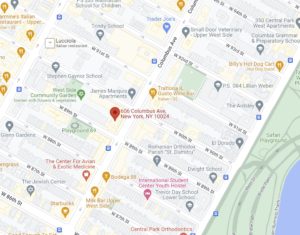The Reggio Emilia Approach was developed after World War II, by psychologist Loris Malaguzzi and parents in the villages around Reggio Emilia, in northern Italy. Its name is derived from the city. The philosophy is an approach, as opposed to a method, to teaching, learning and advocacy for children. It is built on reacting to observations of what children know, are interested in or challenged with.
Some of the fundamentals of the Reggio Emilia approach:
The Child
At its core is an assumption that children form their own personality during early years of development and are endowed with “a hundred languages,” through which they can express their ideas. The aim of the Reggio approach is to teach how to use these symbolic languages (e.g. painting, sculpting, drama) in everyday life. The children are viewed as the controlling factor in this philosophy. They are valued as strong, capable, resilient and rich with wonder and knowledge. These same characteristics are used to drive their learning. Natural curiosity and creativity causes the children to acquire knowledge within them. At Columbus Pre-School, we believe that, essentially, what they’re interested in ends up being the thing that enables them to grow, mentally and academically, the most.
The Hundred Languages of children
Probably the most well-known aspect of the Reggio Emilia approach is the belief that children use many different ways to show their understanding and express their thoughts and creativity. A hundred different ways of thinking, of discovering, of learning. Through drawing and sculpting, through dance and movement, through painting and pretend play, through modelling and music, each one of these Hundred Languages is valued and nurtured.
These languages, or ways of learning, are all a part of the child. Learning and play are not separated. The Reggio Emilia Approach emphasizes hands-on discovery learning that allows the child to use all their senses and all their languages to learn.
The teacher as both a mentor and guide
The role of the preschool teachers is to observe their children in the classroom, listen to their questions and their stories, find what interests them and then provide them with opportunities to explore these interests further. The Reggio Emilia Approach takes a child-led project strategy. The projects aren’t planned in advanced, they emerge based on the child’s interests.
With this approach, the biggest role that a teacher can play is as an observer. They want to listen, observe, document and encourage children in whatever they’re doing. Teachers should feel free to offer knowledge or help when asked, however they’re really supposed to help the learning process, not direct it. Columbus Pre-School teachers are adept at facilitating the learning process for every child and celebrate the individual differences each one brings to the collective “learning table.”
The classroom as an inspirational environment
The classroom should act as an inspirational atmosphere, filled with natural light, and open space which lets creativity flow and is ever-changing to encourage children to delve deeper and deeper into their interests. The classroom should be at atmosphere which encourages collaboration, communication and exploration which is utilized to enhance the learning even further. Anything a child can use to “explore” is vital to the Reggio Emilia approach, so tools such as crayons and blocks are a must-have. The classroom has to be an environment which fosters communication and exploration in order for the environment to encourage growth and learning to the fullest extent.
At Columbus Pre-School, we are avid believers in the Reggio Emilia approach. Our children thrive in our learning environment, utilizing their “hundred languages” in our bright and engaging classrooms, the connected indoor gym, and safe, attached and enclosed outdoor playground. This atmosphere nurtures and respects the different gifts and variety in learning styles that each child brings to the classroom community and encourages the pursuit of their individual passions.


 I am excited to introduce you to the many wonderful things about Columbus Pre-School that made me want to join as director 15 years ago.
I am excited to introduce you to the many wonderful things about Columbus Pre-School that made me want to join as director 15 years ago.